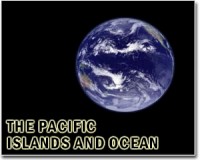| . |  |
. |
Geneva (AFP) Jan 25, 2011 The weather pattern behind floods and extreme conditions in Australia, Asia, Africa and South America is one of the strongest ever and could last for four more months, the UN weather agency said Tuesday. "In atmospheric terms it has to be termed one of the strongest ever La Nina episodes," said Rupa Kumar Kolli, head of world climate services at the UN's World Meteorological Organisation (WMO). "The most important impacts we have witnessed in recent months have been the devastating floods in Australia," he told journalists. The Geneva-based WMO said in its latest update that "a significant La Nina episode" was continuing in the tropical Pacific Ocean "with effects extending onto adjacent ocean basins." All scientific predictions forecast "a continuation of the current La Nina for at least the next two to four months," it added, although the climate pattern was likely to progressively weaken over that period. "Even if we expect La Nina to weaken over the next few months, the impacts are likely to continue," Kumar Kolli cautioned. Apart from flooding in Australia and wetter weather in western Pacific, the WMO is linking La Nina to wetter than normal conditions in southern Africa, drought in east Africa and the western seaboard of South America. Kumar Kolli also drew a direct link with deadly landslides in Brazil and flooding in Sri Lanka for the first time even though they were "atypical impacts" of the disruptive weather pattern. La Nina atmospheric currents that emerged last summer probably combined with other local influences from the Atlantic or Indian Oceans in those instances, he suggested. La Nina is characterised by unusually cool ocean temperatures in the central and eastern tropical Pacific and typically lasts about nine months. However, the complex interaction between shifting ocean currents and the atmosphere, and its range remain little understood by scientists, who are also reluctant to establish a clear tie with climate change. In term of its atmospheric effects -- such as on winds, clouds and pressure systems -- the current La Nina ranked about third strongest for the past century on one scale, while its cooling of Pacific Ocean temperatures was rated as moderate to strong, Kumar Kolli explained.
Share This Article With Planet Earth
Related Links Water News - Science, Technology and Politics
 La Nina blamed for Australia's floods
La Nina blamed for Australia's floodsBrisbane, Australia (UPI) Jan 12, 2011 The La Nina weather phenomenon is to blame for Australia's floods, experts say. Northern Australia was hit by what was referred to as an "inland tsunami" Tuesday night. In Brisbane, Australia's third largest city and the capital of Queensland, the Brisbane River could reach a record crest of 18 feet Thursday. Of the 2 million people living there, one-third were told to leave their homes ... read more |
|
| The content herein, unless otherwise known to be public domain, are Copyright 1995-2010 - SpaceDaily. AFP and UPI Wire Stories are copyright Agence France-Presse and United Press International. ESA Portal Reports are copyright European Space Agency. All NASA sourced material is public domain. Additional copyrights may apply in whole or part to other bona fide parties. Advertising does not imply endorsement,agreement or approval of any opinions, statements or information provided by SpaceDaily on any Web page published or hosted by SpaceDaily. Privacy Statement |